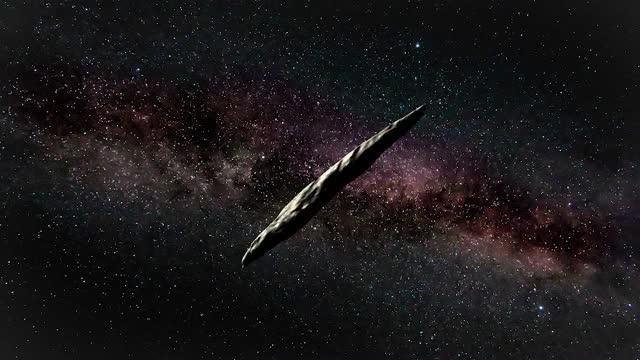The solar system is a system of celestial bodies kept in motion by the sun's gravity, which means that all bodies within the effective range of the sun's gravity are part of the solar system, so by this definition, how large is the solar system?

In clockwise order, the first three outermost parts of the diagram above correspond to the orbits of jupiter, pluto and the asteroid sedna, while the fourth outermost part is the oort cloud, a spherical cloud with a radius of about 1 light year, composed mainly of icy objects.
In other words, the oort cloud is the boundary of our solar system, and we can only fly out of it once we have done so, but that is not enough, we still need to reach a destination (we can't stay in interstellar space forever), and as far as we know, even the nearest star is 4.22 light-years away.
One light year is about 9.46 trillion kilometres. Humans are simply not capable of interstellar flight at the light-year level at present, so if future humans want to fly out of our solar system and into the vast sea of stars, they will have to have much more advanced technology than we have now, and the most direct way to do this is with ftl flight technology.

In addition, there is an even cooler technology - traversing wormholes. In simple terms, a so-called wormhole is a passage connecting two different space-time, and if future humans can create wormholes that can be traversed by spaceships, they can reach another space-time several light-years away in a very short period of time.
However, this is only imaginary technology, and perhaps these technologies are simply unattainable within the limits of the laws of the universe, so the question arises: What would humanity do without ftl and wormholes? In that case, would humanity be trapped in the solar system forever?
In 2017, mankind discovered an "Uninvited guest" In our solar system, the oromo, which was travelling at a speed of just 26 km/s when it entered the solar system. Scientists speculate that it came from a star cluster 163 to 277 light-years away, and that it reached our solar system after a journey of about 40 million years.

The first known object from outside our solar system, omo is a vivid demonstration of the 'dumb way' of interstellar flight - using time to conquer distance. Obviously, in the absence of ftl and wormholes, future humans could also use this "Dumb way" To leave the solar system - how?
It is conceivable that if future humans are technologically advanced enough to be able to modify and edit their genes to dramatically increase their lifespan, or even to achieve immortality, or to crack the secret of human consciousness and upload it to machines, then long interstellar flights will not be a problem at all.
However, like ftl and wormholes, these technologies are also illusory, and it is still a huge question mark whether they can be realised. In the author's opinion, the following two methods should actually be more feasible.
1、Dormant pods

Many creatures on earth will be dormant, when they are in a dormant state, the body's metabolism will drop to an extremely low level, and the life activities of some creatures can even go into a state of stasis, and they will wake up again when the environment is suitable. So in the future, when humans have mastered hibernation technology, they will be able to significantly reduce the consumption of oxygen, food, space and energy during their journeys, thus allowing long interplanetary flights.
2、generation ship
In simple terms, a generation ship is a huge, fully self-sufficient spacecraft that can accommodate a large number of humans for a long period of time and collect available materials for replenishment along the way, so that humans can fly interstellar for generations until they finally reach their destination.
With the technology available to mankind, it is only a matter of time before "Hibernation pods" And "Generation ships" Are possible, meaning that even without ftl and wormholes, mankind would not be trapped in the solar system forever, through the "Dumb way" Of "Conquering distance with time" Would still allow us to realise our dream of a sea of stars.
Besides, in about 5 billion years, the sun will turn into a huge red giant, with occasional powerful helium flashes, and the solar system will no longer be fit for human life, so whether we like it or not, we will have to find a way to leave the solar system before this happens.


